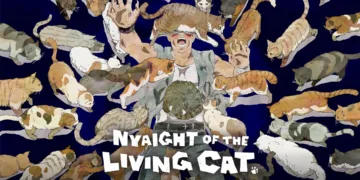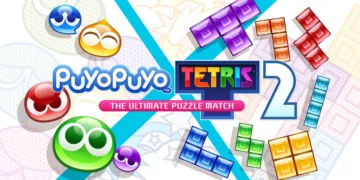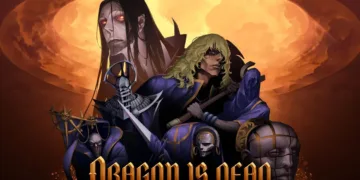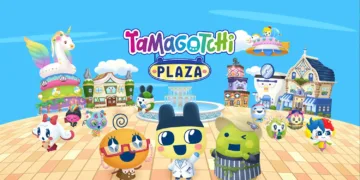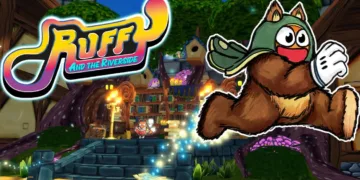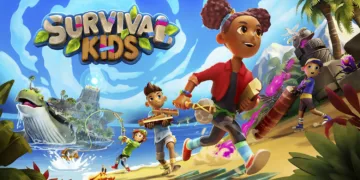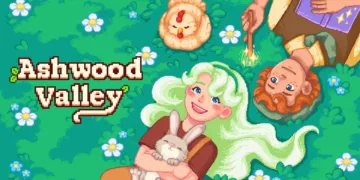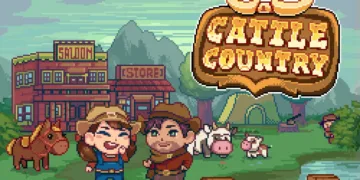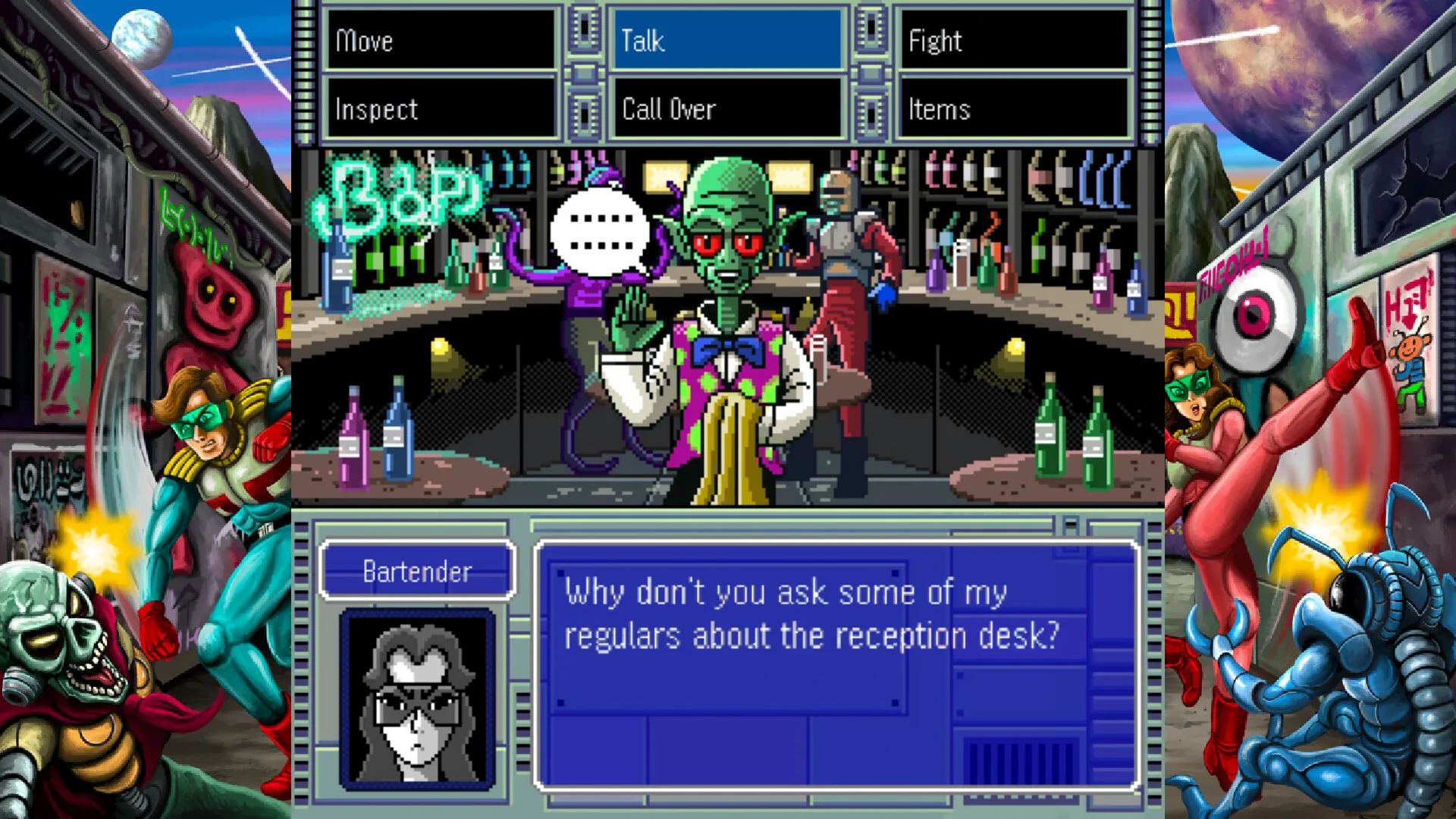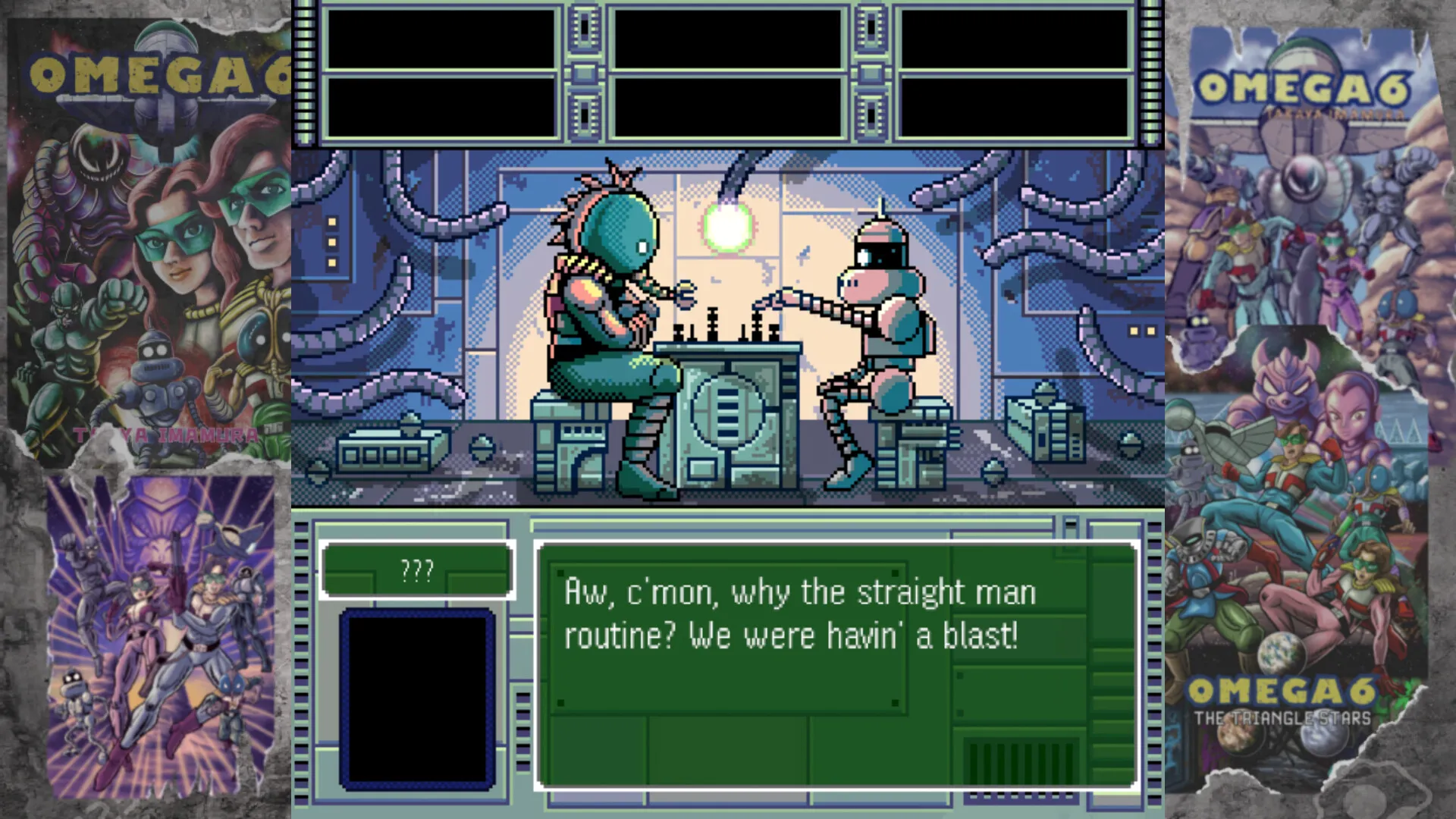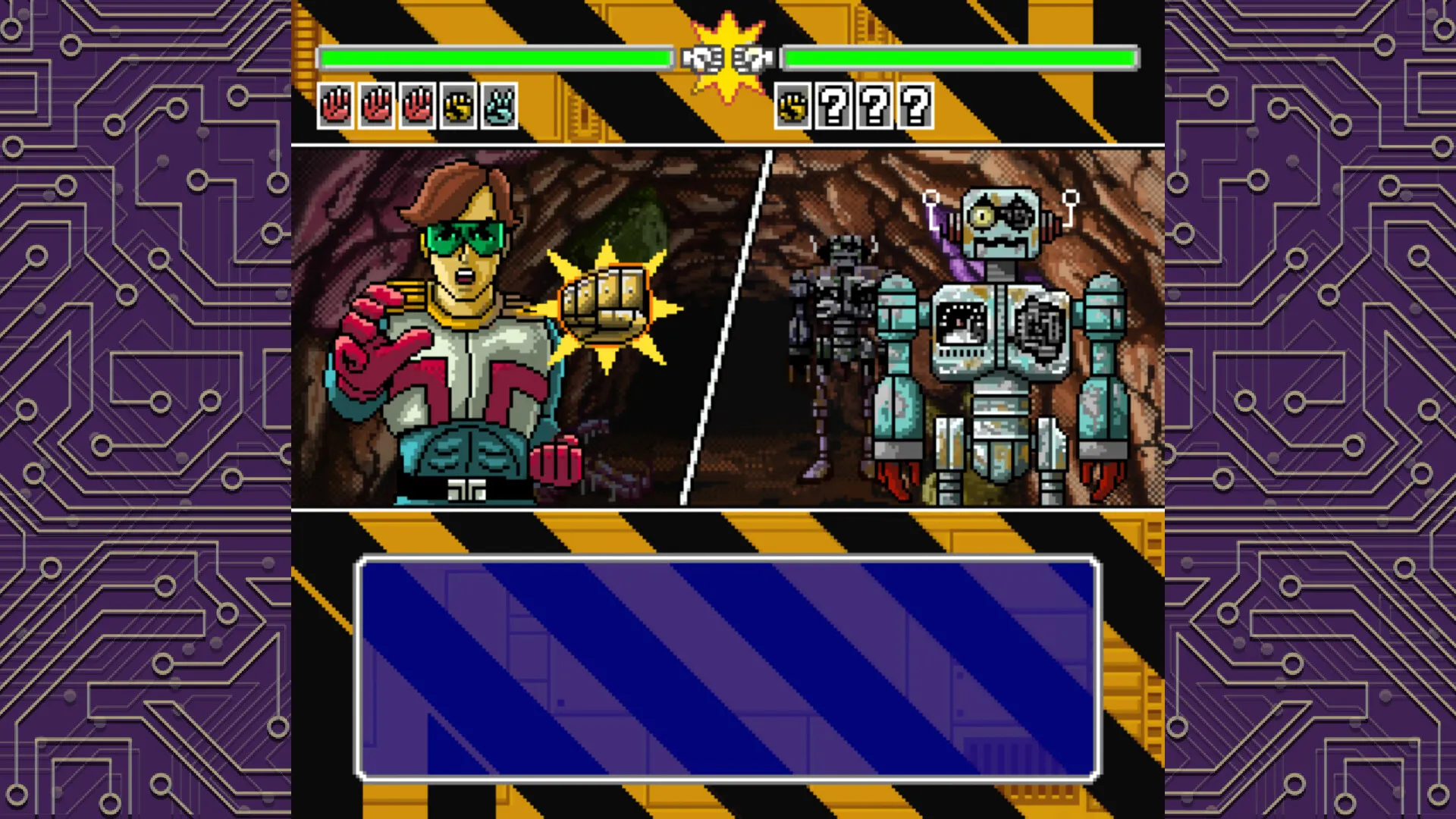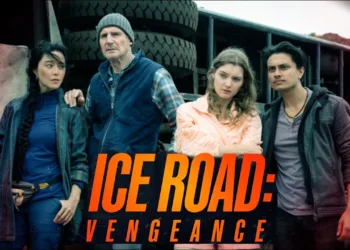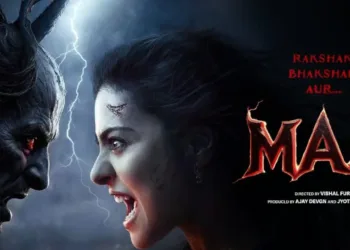Takaya Imamura brings a distinct artistic legacy to this project, a man whose work at Nintendo created memorable figures such as Captain Falcon and Tingle. After a long career crafting worlds for iconic games, he shifted focus to independent projects. His manga now serves as the blueprint for a game that reinterprets familiar adventure mechanics with a retro twist.
The game sets the stage as a point-and-click adventure set against a futuristic backdrop where humanity faces an urgent need for a new home. Protagonists Thunder and Kyla, two androids with contrasting personalities, are thrust into a scenario filled with quirky challenges and unexpected encounters. Their mission to secure a habitable planet unfolds amidst a collage of sci-fi elements and nostalgic pixel art.
The visual presentation draws inspiration from classic 16-bit era titles, evoking the charm of early interactive storytelling. The design pays homage to pioneering adventure games while incorporating a playful tone that is both lighthearted and subtly reflective.
The narrative and interactive moments intermingle to produce an experience that is both entertaining and thought-provoking, inviting players to immerse themselves in a carefully constructed world that celebrates the charm of its origins while offering thoughtful commentary on the nature of exploration and discovery.
Story, Characters, and World Building
The game sets up a captivating chase for a long-lost artefact amid a backdrop where humanity scrambles for a fresh start. In this setting—a futuristic space filled with retro charm—overpopulation and the mix of alien cultures create a lively stage.
The plot revolves around a treasure hunt that ties directly into the struggle to secure a new planet, with hints of bureaucracy and cosmic oddities lending a playful touch to the storyline.
Thunder and Kyla, two androids with distinct traits, drive the narrative forward. Thunder’s straightforward, rock-leaning approach in combat contrasts nicely with Kyla’s more balanced style, leading to witty exchanges that pepper their quest.
Their banter and contrasting abilities make encounters both entertaining and thought-provoking. The supporting figures, including characters like Prop and Flavo, add spice to the mix with offbeat humor and practical advice that keep the pace engaging.
Rival treasure hunters and antagonists add a layer of conflict that forces our heroes into creative problem solving. These characters create friction at just the right moments, pushing the narrative into unexpected twists and providing moments of tension amid lighter interactions.
The world itself comes alive through detailed planetary settings. One planet may burst with the chaotic energy of a treasure-hunting hub, while another presents a harsher, more austere environment that hints at hidden dangers. The interplay of distinct locales supports a broader discussion on societal quirks and the funny side of cosmic red tape, all wrapped in a light, self-aware tone.
Witty dialogue and situational humor maintain a steady rhythm throughout, blending moments of reflection with playful jabs at classic science fiction ideas. This delicate balance between thoughtful storytelling and the spontaneity of offhand remarks leaves room for readers to consider how a well-crafted setting and clever character interplay can enhance the emotional pull of an adventure.
Interactive Design and System Analysis
The game offers a familiar point-and-click interface that recalls classic adventure titles. Players work with a clear menu-driven system where actions like “Move,” “Talk,” and “Inspect” appear as options on screen.
Each command ties directly into the exploration of detailed static scenes, and the system makes the process of collecting clues and unlocking new areas feel like a series of satisfying mini-tasks.
A closer look reveals a structure built on investigation and puzzle solving. Players observe environments carefully, select appropriate commands, and follow task sequences that steadily build the narrative. Fetch quests and specific challenges are arranged in a way that encourages attention to detail. This design supports a methodical approach, where careful interaction with the game world helps piece together its story while engaging with diverse puzzles.
The combat system introduces a twist on a classic game of chance. Using a card-based method modeled on the rock, paper, scissors game, each character has a specialty that influences their choices during encounters.
Thunder’s tendency to favor rock, for example, gives him a predictable edge in some battles, while Kyla may offer a more balanced set of options. Players must assess the enemy’s available cards, predict upcoming moves, and make decisions that blend careful strategy with a measure of risk.
This randomness keeps battles unpredictable. A single misstep can lead to significant setbacks, with lost items and reduced health making each confrontation feel weighty and demanding attention.
An innovative feature appears in the form of a bonsai tree system aboard the spaceship. Players nurture this small plant to yield fruit that provides useful benefits such as healing or temporary power boosts during combat.
The process requires foresight; nurturing the tree for a future advantage might mean sacrificing immediate gains, which adds a layer of decision-making that interlocks with the combat and exploration mechanics.
Progression follows a path marked by completing tasks, engaging with side quests, and gathering credits to facilitate travel between areas. The balance between investigative work, puzzle challenges, and tactical combat creates a rhythm that guides the player through the game’s many layers.
Each encounter tests the player’s growing familiarity with the systems, and the learning curve presents challenges that are both rewarding and thought-provoking. This interplay between measured resource management, strategic combat decisions, and environmental puzzles offers a rich field of study for those who appreciate a game designed with care.
Visual and Audio Synergy
The game presents a pixel art style reminiscent of a classic 16-bit SNES title. Every scene appears as a carefully arranged tableau, where static screens capture the spirit of early adventure games. The art design channels a nostalgic mood with detailed sprites and backgrounds that invite players to linger over each location.
Characters emerge in a variety of forms—from insect-like beings to eerie skeletal figures—with each NPC rendered to highlight its own distinct personality. The sheer variety in design suggests a dedication to recreating the charm of a bygone era.
The interface introduces a set of context-sensitive commands that feels true to its roots. Simple options such as “Move,” “Talk,” and “Inspect” integrate naturally into the display, allowing players to interact with the world without distraction. The menu system is uncomplicated yet effective, emphasizing clarity in choice over flashy modern distractions.
Sound by Shinobu Amayake enhances the visual experience with tracks that evoke memories of classic gaming soundscapes. The score provides catchy rhythms that support moments of tension during combat and lighthearted tunes during dialogue.
Carefully chosen sound effects punctuate key actions, while ambient audio enriches the atmosphere of each environment. Together, the music and effects create an auditory canvas that complements the pixel art and deepens the immersive quality of the game.
The pairing of visual and audio elements reinforces the game’s storytelling and interactive design. Each artistic decision appears driven by an affection for earlier gaming eras, and every sonic cue is selected to accentuate the mood of the narrative. This careful orchestration of design choices raises a thought-provoking question about how such classic visual and audio techniques might inspire future projects in interactive media.
World Interaction, Exploration, and Interface Flow
The game lets players shift between static screens, where unlocking new planetary areas requires spending in-game currency on travel passes. Screen cues appear naturally, guiding interaction with objects and characters while providing a clear list of commands tailored to each location.
The menu-driven system presents actions like “Move,” “Talk,” and “Inspect” based on the current scene, making the world feel both accessible and engaging. There is a noticeable repetition, such as having to signal a character before conversation, which at times slows progress and may test patience.
Side quests and optional tasks emerge alongside the main plot, offering extra challenges that deepen the experience. Completing these secondary objectives rewards players with credits and useful items, adding extra layers of interest. The design rewards careful study of each screen and the clues scattered throughout, with each extra task enriching the overall narrative experience.
The pacing shifts when transitioning from quiet investigative moments to more dynamic combat encounters. Spending credits to obtain travel passes introduces a strategic element, requiring players to manage resources with care while moving between different planetary environments.
Although some steps repeat in various locations, these reminders help maintain focus on key gameplay features. This careful structuring of player actions creates a system where thoughtful choices and spontaneous discoveries blend together, leaving one to wonder how each decision might reveal another hidden facet of the game world.
Final Thoughts and Player Experience
This game channels a retro visual style paired with witty narrative and engaging adventure-RPG elements. Its pixel art and design choices evoke memories of classic point-and-click titles, while the playful dialogue and distinct character personalities inject humor into every step. The art consistently charms with detailed sprites and carefully designed settings, inviting fans of vintage aesthetics to explore a universe that feels lovingly crafted.
The mechanics stand out through inventive combat and exploration systems. The card-based battles, inspired by a simple rock, paper, scissors approach, add a refreshing twist that challenges players to balance strategy and chance.
Meanwhile, the investigative mode—where players inspect scenes and piece together clues—creates a thoughtful rhythm that deepens the experience. For those who appreciate the quiet satisfaction of solving puzzles and the occasional burst of action, the game offers a rewarding dynamic.
Some interactions, such as repetitive command prompts, may test patience, and the unpredictability of battles can sometimes interrupt the smooth flow of play. Yet, these quirks also encourage repeated playthroughs as players experiment with different tactics and strategies, seeking to master the nuanced systems.
Fans of retro adventures, classic role-playing mechanics, and quirky science-fiction narratives might find that each session uncovers fresh details and unexpected twists, leaving an open-ended invitation to rediscover the hidden layers of this creatively driven work.
The Review
OMEGA 6 The Triangle Stars
This game charms with its nostalgic pixel art, witty narrative, and innovative combat puzzles. Its mix of adventure and strategic challenges delivers a satisfying experience despite occasional pacing hitches. Fans of classic point-and-click adventures will find much to enjoy.
PROS
- Charming retro pixel art and nostalgic visuals
- Engaging narrative with witty dialogue
- Innovative combat system that challenges strategy
CONS
- Repetitive command prompts can slow progress
- Unpredictable combat outcomes may frustrate some players


























